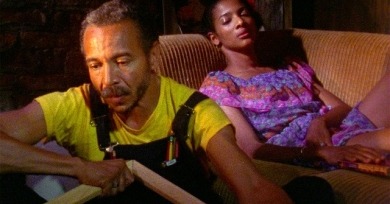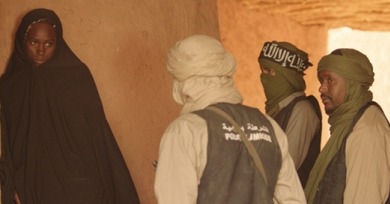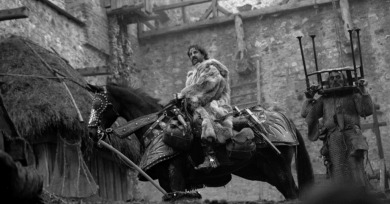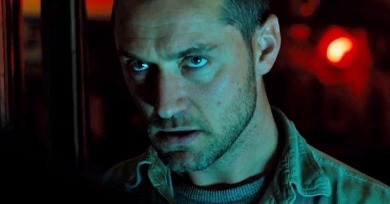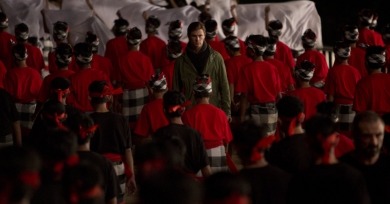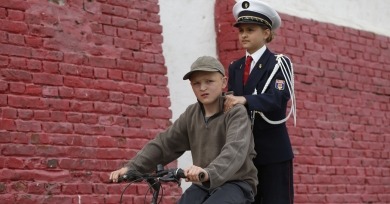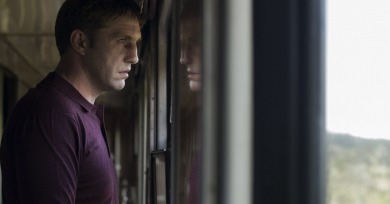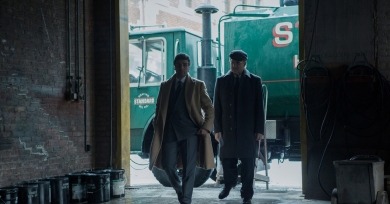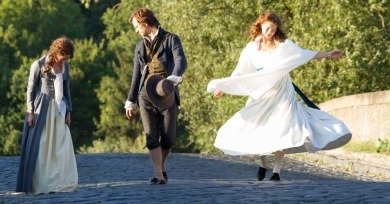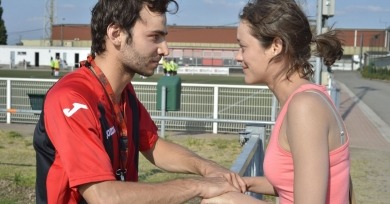Reviews
Poverty, of the sort that scarred young Christian both physically and mentally, appears in Fifty Shades of Grey only as an abstraction, a source of blockages to be “overcome” on the way to normative reprogramming.
As crucial as it is to reclaim Losing Ground as a vital, vibrant, retroactively canonical independent film by an African American female director—made when African American female directors were even scarcer than they are now—it’s no less crucial to view Collins’s film on its own defiantly individualistic terms.
The film’s inherent drama could easily be heightened with manufactured dread and suspense, but Sissako relaxes the pace to gain a broader view. Instead of accentuating conflict, he details smaller moments of change.
One could easily imagine German’s masterwork flickering through the gate in projection booths and then deposited in serpentine curlicues directly into a wet open pit, to be fermented like kimchi or composted like coffee grounds and eggshells.
American Sniper’s defenders have basically staked out ground as formalists, while its detractors have made both weak and strong claims about the “responsibility” filmmakers have to a certain amount of ethical rigor and political engagement when making a film about an actual military conflict.
Rather than Powell-Pressburger’s distinctly Anglo-Saxon mysticism or Huston’s folk-grotesquerie, Macdonald’s style hews close to the currently accepted tenets of realism, a matter of busily plucking out isolated details, which achieves a strangely disconnected and flattening effect.
Kinky but never salacious, The Duke of Burgundy is a penetrating dissection of an imbalanced relationship before it shifts into being a surreal, teasingly nightmarish evocation of that imbalance, and it’s more fascinating as the former than the latter.
Blackhat is very much in the vein of the filmmaker’s elusive post-Insider style, with its alternately sleek and smeary hi-def palette, terse-bordering-on-narcotized performances, and glancing (if not downright indifferent) approach to narrative.
Porumboiu has made another deadpan comedy, but his subject is now himself. When Evening Falls on Bucharest or Metabolism would be best described as a self-reflexive investigation into its own aesthetics.
It’s impossible to consider L’il Quinquin as anything other than an auteur work, which is why its reception as a detour of sorts is a little misleading. For all that Dumont does differently here, he also stays resolutely on track.
The degree to which its resignation reflects the film’s point of view, and not just of its beleaguered characters, is an unsettled ambiguity at the heart of Andrei Zvyagintsev’s extraordinarily accomplished movie.
A Most Violent Year is Chandor’s most intricately scripted and assertively directed film yet, even if all he’s really asserting is a preference for the Sort of Movies That They Don’t Make Anymore.
If excess—visual and aural—is the melodrama’s stock-in-trade, Dominik Graf’s Beloved Sisters is an atypical example of the genre for the extent to which it is propelled by language.
The relentless repetition of the context (why the ballot is being held again), of Sandra’s plea, and of one question she frequently receives in response (“How many of the others have accepted to lose their bonus?”) approaches liturgy.

